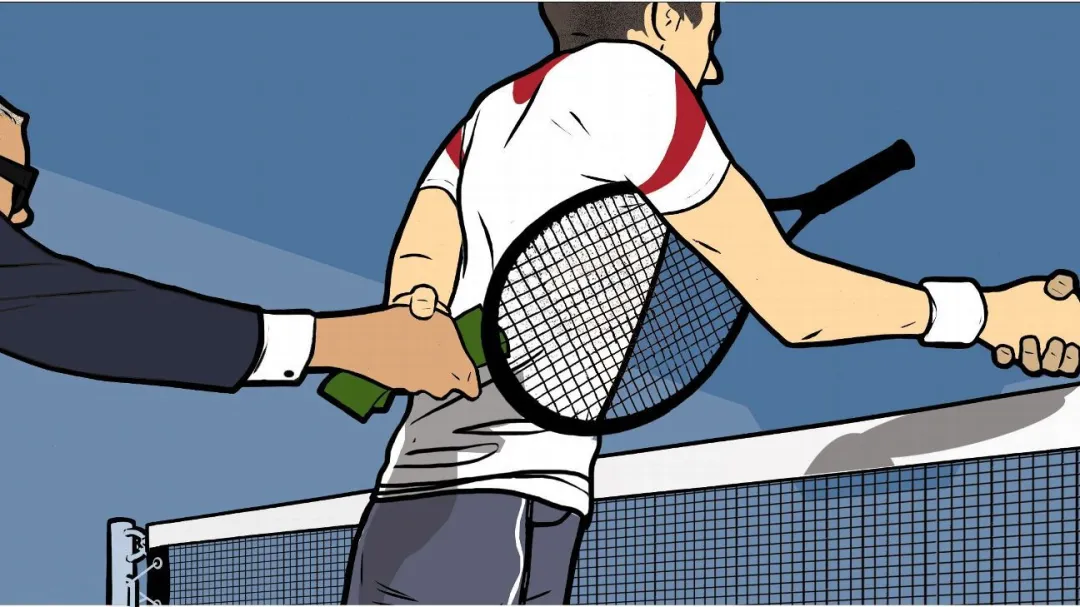
My Picks : World Cup – Match Day 10
Today sets off 3rd round matches of group stage on FIFA World Cup 2022, with…

Tennis, with its global reach, fast-paced action, and individual player dynamics, has become one of the premier sports for online betting. Its intrinsic nature of ebbs and flows, combined with the rapid advancement of online betting platforms, offers a multitude of opportunities for the discerning punter. Let’s dive into the intricacies of tennis betting, focusing on prematch markets, live betting nuances, and how savvy gamblers can seize the edge.
When you open any reputable online betting platform, tennis invariably has a plethora of markets available. Prematch betting includes wagers placed before the match starts, focusing on outcomes such as match winner, total number of games, or whether there will be a tiebreak.
However, it’s live betting that has truly transformed tennis wagering. Live betting allows gamblers to bet in real-time as the match unfolds. Some of the most popular markets include:
| Market Type | Betting Timing | Notable Features | Example |
|---|---|---|---|
| Match Winner | Prematch | Predicting the overall winner of the match | Novak Djokovic vs. Rafael Nadal: Bet on Djokovic to win |
| Total Number of Games | Prematch | Estimating the cumulative number of games played | Over/Under 23.5 games in a 3-set match |
| Point-by-Point | Live | Betting on individual point outcomes | Next point winner: Roger Federer |
| Set Betting | Live | Predicting set outcomes, often with specific scores | 2nd Set score: 6-3 in favor of Dominic Thiem |
| Break/Hold | Live | Betting on service games either being held or broken | Next game: Carlos Alcaraz to hold serve |
One of the biggest lures of live betting in tennis is the potential to exploit inefficiencies. While bookmakers use sophisticated algorithms that factor in past results, match statistics, and player rankings, they often struggle to incorporate real-time intangibles.
Factors like the crowd’s energy, a player’s body language, sudden injuries, or even the psychological importance of a specific point can deeply influence a match. Tennis enthusiasts, with a keen understanding of the game, can pick up on these cues, often before bookmakers can adjust the odds. For instance, young talents like Carlos Alcaraz might showcase a burst of energy that algorithms won’t immediately pick up on, or seasoned players like Novak Djokovic might display subtle signs of fatigue or injury.
If you have done your research and can interpret these real-time variables, live betting offers a unique opportunity to capitalize on these moments of volatility.
For those aiming to maximize their edge, specific markets are rife with opportunity:
The glitz and glamour of the Grand Slams or the ATP Masters often overshadow the lower-tier tournaments like the ATP Challengers or ITF events. However, these overlooked tournaments present a goldmine of betting opportunities for several reasons:
| Tournament Tier | Visibility | Key Betting Considerations | Example Players |
|---|---|---|---|
| Grand Slams | High | High media coverage; odds often tightly matched to player forms | Carlos Alcaraz, Alexander Zverev |
| ATP Masters | High | Significant media coverage; top players frequently participate | Stefanos Tsitsipas, Naomi Osaka |
| ATP Challengers | Medium-Low | Less data for bookmakers; diverse player profiles leading to unique matchups | Emerging talents; past stars regaining form |
| ITF Events | Low | Potential for mispriced odds; local conditions play a big role | Local wildcards; young players climbing ranks |
By dedicating time and research into understanding the dynamics of ATP Challengers and lower-tier events, bettors can unearth valuable opportunities that might not be present in more high-profile tournaments. Investing in these can be a rewarding strategy in the long run, especially for those willing to dive deep into the nuances of the sport beyond the spotlight.
Match-fixing, sadly, has tainted the world of tennis, just as it has other sports. Particularly in the lower tiers of the professional circuit, where prize money isn’t as substantial, some players have been tempted by the allure of easy money. While this dark underbelly certainly poses ethical and integrity questions for the sport, from a betting perspective, it presents both problems and opportunities.
In conclusion, while match-fixing might present occasional opportunities for the shrewd or the unscrupulous, it’s a significant problem for tennis and its bettors. Engaging with it can not only undermine the essence of the sport but also lead to personal ethical and legal quandaries. The best strategy is always to approach betting with a combination of research, strategy, and ethics, steering clear of the shadows cast by match-fixing.
Online tennis betting, especially live betting, is a thrilling venture. By focusing on the intricacies of the game, understanding player psychology, and staying updated with real-time events, bettors can find value in the dynamic world of tennis betting. Whether you’re backing Djokovic in a Grand Slam final or seeking value in a Challenger event, tennis offers a myriad of opportunities for the astute gambler.
Prematch betting often revolves around predicting the match winner, the total number of games, or whether there will be a tiebreak in a specific set.
While prematch betting requires you to place wagers before the match starts, live betting allows you to bet in real-time as the action unfolds. This dynamic nature of live betting can factor in ongoing game events, player form, and momentum.
Factors such as crowd involvement, player body language, injuries, and the psychological importance of certain points can impact a player’s performance and, consequently, the odds. These factors are often harder for algorithms to account for immediately, which might lead to odds discrepancies.
Yes, these events often present mispriced odds due to less visibility and data. Additionally, factors like player motivation, diverse player profiles, and specific local conditions can create valuable betting scenarios.
Match-fixing involves players intentionally underperforming, often due to bribery. For bettors, this presents a challenge because it adds unpredictability to match outcomes. While some see suspicious patterns as opportunities, it’s essential to approach them with caution, keeping ethics and legality in mind.
Different surfaces (grass, clay, hardcourt) impact play styles and player effectiveness. Conditions like altitude and humidity can also influence player performance, particularly in lower-tier tournaments where local players might have an advantage due to familiarity.
Knowingly betting on fixed matches is unethical and can be illegal in many jurisdictions. Bettors are advised to prioritize the integrity of the sport over potential profits.
A player’s recent form can indicate their current physical and mental state, which might be more relevant to an upcoming match than past performances. For instance, a player returning from injury or experiencing a confidence surge might perform differently than their historical data suggests.
Yes. Focusing on real-time cues like player body language, understanding player strategies, and recognizing momentum shifts can offer advantages in live betting. Betting on specific markets like live point-by-point outcomes or tiebreak points can also be profitable with the right insight.
Bookmakers use complex algorithms that factor in past results, player rankings, head-to-head stats, and other variables. However, they might not always account for real-time intangibles, leading to potential opportunities for well-informed bettors.